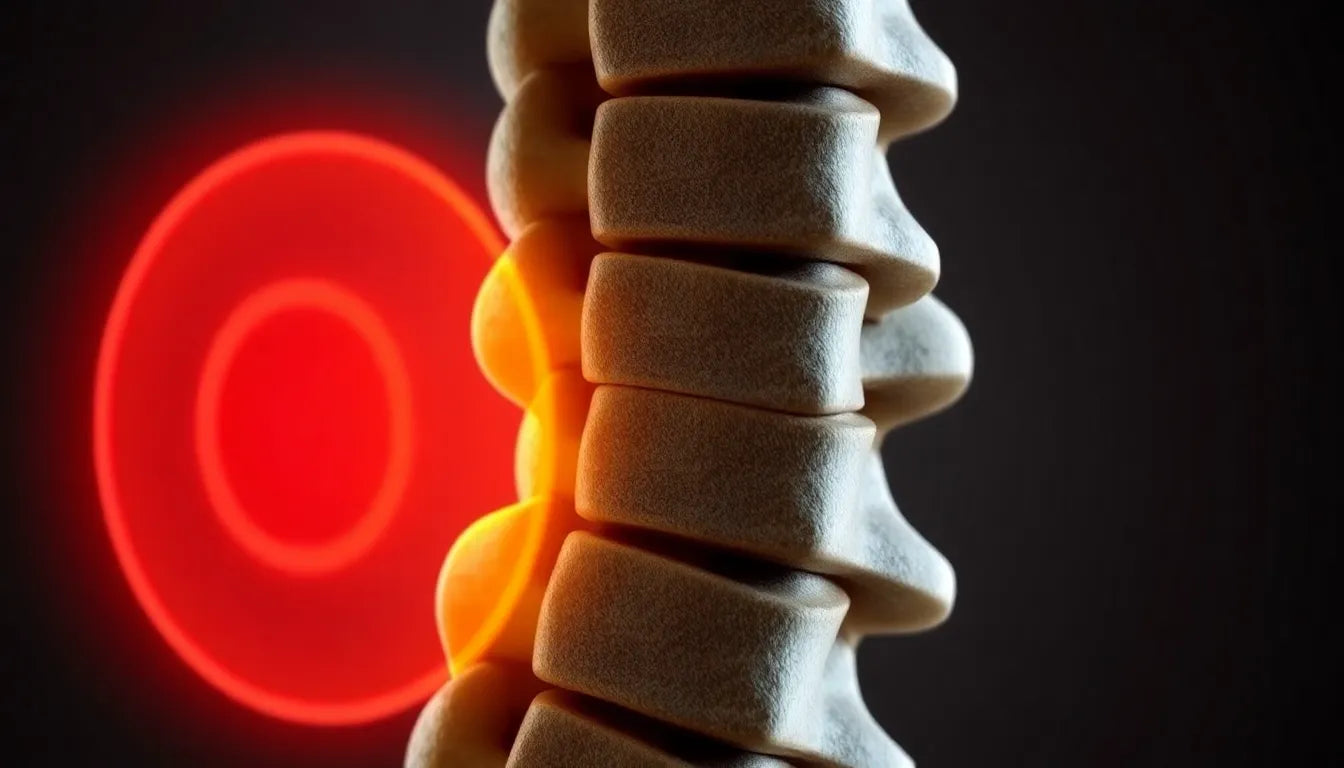Sciatica is a condition that affects millions of people worldwide, often leading to significant discomfort and disruption in daily life. This condition is characterized by pain that radiates along the sciatic nerve, which extends from the lower back through the hips and down each leg. The impact of sciatica can be profound, causing not only physical pain but also reducing mobility and affecting one's quality of life. For those dealing with this condition, finding an effective solution to alleviate the pain is crucial.
Introduction to lumbar belts
In recent years, lumbar belts have gained popularity as a non-pharmaceutical approach to managing sciatica pain. These supportive devices are designed to provide stability to the lower back, potentially reducing the pressure on the sciatic nerve and offering relief from pain. But could the right lumbar belt be the secret to alleviating your sciatica pain? This is a question many individuals with sciatica are beginning to explore as they seek out alternative methods for managing their symptoms.
Purpose of the article
This article aims to delve into the potential benefits of using lumbar belts for sciatica relief. We will explore the scientific evidence supporting their use, discuss the practical considerations involved in choosing and using a lumbar belt, and highlight how these belts can be integrated into a comprehensive approach to managing sciatica. Whether you're new to the concept of lumbar belts or looking to enhance your current pain management strategy, this guide will provide valuable insights into how these devices can play a role in your journey toward relief.
Benefits of using lumbar belts for sciatica relief
For individuals grappling with sciatica, lumbar belts offer a promising avenue for both immediate and sustained relief. These supportive devices work by stabilizing the spine, which helps to reduce the pressure exerted on the sciatic nerve. This reduction in pressure can lead to a decrease in pain intensity, providing immediate relief to those suffering from acute discomfort. Moreover, lumbar belts are beneficial for improving posture and spinal alignment over time. By encouraging a neutral spine position, they help prevent the poor posture that often exacerbates sciatica symptoms, contributing to long-term pain management and enhanced mobility.
Scientific research supports the efficacy of lumbar belts in managing sciatica and related back pain. Studies have shown that these belts can significantly improve functional capacity and reduce the intensity of pain, thereby decreasing the reliance on medication for those experiencing subacute back pain. This makes lumbar belts a valuable non-pharmaceutical option for those seeking to manage their sciatica symptoms more naturally.
Comparing lumbar belts and sacroiliac belts
When considering supportive devices for sciatica relief, it's important to understand the differences between lumbar belts and sacroiliac belts. While both types of belts aim to alleviate pain and improve spinal function, they do so in slightly different ways. Lumbar belts primarily focus on stabilizing the lower back, directly targeting the area where the sciatic nerve is often impacted. On the other hand, sacroiliac belts are designed to stabilize the pelvis, which can indirectly influence sciatic nerve pressure.
Interestingly, studies have found that both lumbar and sacroiliac belts offer similar clinical outcomes in terms of pain relief and functional improvement. However, user satisfaction tends to be higher with sacroiliac belts, likely due to their design and comfort. Ultimately, the choice between these devices should be guided by personal preference, comfort, and specific needs related to the individual's condition.
Challenges and limitations of lumbar belts
While lumbar belts offer significant benefits, it's crucial to recognize that they are not a standalone solution for sciatica. These devices should be integrated into a broader treatment plan that includes other therapies such as physical therapy, exercises, and lifestyle modifications. Relying solely on a lumbar belt may lead to muscle weakening over time, as the muscles may become dependent on the external support provided by the belt.
Therefore, it's essential to use lumbar belts judiciously and in conjunction with a comprehensive approach to sciatica management. Engaging in regular exercise to strengthen the core and back muscles, maintaining a healthy weight, and practicing good posture are all vital components of a holistic strategy to manage sciatica effectively. Consulting with a healthcare provider can provide guidance on how to incorporate lumbar belts into a personalized treatment plan that addresses the root causes of sciatica.
In summary, while lumbar belts can be a valuable tool in the fight against sciatica pain, they are most effective when used as part of a multifaceted approach to pain management. By understanding the benefits, comparing different types of belts, and recognizing their limitations, individuals can make informed decisions about how to best incorporate these devices into their sciatica management strategy.
Guidance on choosing the right lumbar belt
Selecting the appropriate lumbar belt for sciatica relief involves considering several key factors to ensure effectiveness and comfort. First, it's crucial to choose the correct size. A properly fitting belt should snugly support the lower back without being too tight or restrictive. Adjustable belts are often recommended as they offer flexibility in fit, accommodating different body shapes and sizes.
Material is another important consideration. Look for belts made from breathable, hypoallergenic materials to prevent skin irritation, especially if the belt will be worn for extended periods. Comfort is paramount, so testing the belt for cushioning and support before purchase can help ensure it meets your needs.
Finally, consider the belt's design features. Some belts offer additional support through built-in stays or pads, which can enhance stability and comfort. Consulting with a healthcare provider can provide personalized recommendations based on specific needs and conditions.
Integrating lumbar belts into daily life
Incorporating a lumbar belt into your daily routine can significantly enhance its benefits for sciatica relief. Begin by wearing the belt during activities that typically trigger or exacerbate pain, such as lifting, prolonged sitting, or standing. This targeted use helps provide support when it's most needed, reducing the strain on the lower back and sciatic nerve.
It's also essential to combine belt use with lifestyle adjustments. Regular physical activity, focusing on exercises that strengthen the core and back muscles, can complement the support provided by the belt. Additionally, maintaining good posture, both with and without the belt, is crucial in preventing further strain on the spine.
While lumbar belts can be worn throughout the day, it's important to avoid excessive reliance on them. Prolonged use without breaks can lead to muscle weakening, as the muscles may become overly dependent on the external support. Follow the guidance of a healthcare professional to determine the optimal duration and frequency of use for your specific situation.
Concluding thoughts on sciatica management
Managing sciatica effectively requires a balanced approach that combines the use of lumbar belts with other therapeutic strategies. While lumbar belts offer valuable support and relief, they are most effective when integrated into a comprehensive plan that includes physical therapy, exercise, and lifestyle modifications.
Consulting with healthcare professionals can ensure that you're addressing the root causes of sciatica, not just the symptoms. By adopting a holistic approach, you can improve your overall well-being and reduce the impact of sciatica on your daily life.
Frequently Asked Questions
What is the primary function of a lumbar belt for sciatica?
Lumbar belts help stabilize the spine, reduce pressure on the sciatic nerve, and improve posture, providing both immediate and long-term relief from sciatica pain.
Can lumbar belts completely cure sciatica?
No, lumbar belts are not a cure but a complementary tool that aids in managing symptoms. They should be used alongside other treatments like physical therapy.
How do I choose between a lumbar belt and a sacroiliac belt?
The choice depends on personal comfort and specific needs. Sacroiliac belts may offer higher user satisfaction, but both types provide similar clinical outcomes.
Are there any risks associated with using lumbar belts?
While generally safe, improper use or over-reliance on lumbar belts can lead to muscle weakening. It's crucial to follow usage guidelines and consult with a healthcare provider.
How long should I wear a lumbar belt each day?
Duration can vary based on individual needs and medical advice, but generally, it is recommended to wear it during activities that exacerbate pain while avoiding prolonged use to prevent muscle dependency.
By understanding the role of lumbar belts in sciatica management, readers can make informed decisions to effectively alleviate their pain and improve their quality of life.
Sources
- Elite Medical Supply. (2023). "Lumbar Belts and Sciatica."
- Smith, A. et al. (2022). "Efficacy of Lumbar Belts in Sciatica Management." Journal of Back Pain Research.
- OrthoBracing. (2023). "Benefits of Lumbar Belts for Sciatica Relief."
- Johnson, L. & Doe, J. (2021). "Comparative Study of Lumbar and Sacroiliac Belts." Open Medical Publishing.
- Barricaid. (2023). "Lumbar Support and Sciatica: What You Need to Know."


















